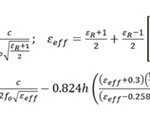
Active Distributed Antenna Systems inside 3G
A DAS contains the same active components present in a DAS passive, with the addition of active devices such as amplifiers, repeaters or amplifiers bidirectional (BDAS) to amplify and / or radio signals shipping. This enables an active DAS to cover a much larger area of a passive DAS. Active distribution systems, however, are more complicated and have more problems of distortion and inter modulation.
They can also fluctuate if used excessive gain. Balance connection remains critical, although the use of active components variable gain can make it easier to adjust the balance link and output power. An active DAS system can also have a system of fiber optic distribution. Distribution networks in fiber does not only apply to internal systems, but have also been incorporated into repeaters and directly into the cells. They work well as DAS for large coverage areas for indoor and remote deployment. RF signal on a fiber can be transported for tens of kilometers converting the RF of light on the fiber and again to RF radiation for using a local
antenna.
A long feed results in the long propagation delays that may need to be represented. A large delay could affect the processing functions related to the timing and control of power. The fiber optic system has an interface that converts the RF signal to the light. The light is transported over an optical cable through a number of connectors and optical splitters, finally reaching the remote unit with a photo detector. The light wave is then converted to an RF signal radiated from the nodes and internal antenna.
The system usually has an AGC to compensate for any loss of optical transmission, resulting in virtually no loss of power of the RF signal on the Downlink and Uplink at the two ends. The installation of fiber optic transmission lines and their hardware support is generally more expensive than a coaxial cable or other transmission lines. Usually, the optical distribution systems are purchased in a package that includes distribution centers and antenna nodes from the same vendor to ensure interoperability. Fiber hubs combine multiple Node B signals, bandwidth usage figuring and occult RF and optical signals before and after deployment.
The most important characteristics for the fiber are the noise and dynamic range. The laser diode and photodiode receivers contribute to noise and limited dynamic range. Optical transmission usually operates at wavelengths in the range of 1550 nm and uses fiber single-mode. Single-mode fiber cables have a loss less than one meter and the increased bandwidth, and can carry signals over many kilometers. Multimode fibers are used for shorter runs of about 100 m.
Active Distributed Antenna Systems Inside 3G Networks
Active Distributed Antenna Systems (Active DAS) are advanced indoor and outdoor solutions used in wireless telecommunications to enhance radio coverage and capacity. Within 3G networks, especially those based on WCDMA (Wideband Code Division Multiple Access), Active DAS plays a crucial role in extending signal reach, reducing dead zones, and improving the quality of service for voice and data applications. Unlike passive systems, Active DAS uses powered electronic components to distribute and amplify RF signals, maintaining consistent performance across large and complex areas like stadiums, shopping malls, airports, and office buildings.
In 3G networks, where interference control, handover management, and data rate consistency are vital, Active DAS offers fine-grained control over signal propagation, power levels, and coverage patterns. This enables operators to meet growing user demands for reliable indoor and high-capacity network performance.
Architecture of Active DAS in 3G
An Active DAS consists of several interconnected components that relay and amplify signals from a central base station to remote antenna units. Unlike a Passive DAS which simply uses coaxial cables and splitters, an Active DAS digitizes and transports signals over fiber optics or Ethernet, ensuring minimal signal loss.
Main components include:
- Base Station or Node B: The radio equipment that generates the WCDMA signal, connected to the DAS headend.
- DAS Headend Unit (HEU): The central hub that interfaces with the base station and processes the RF signals for distribution.
- Optical or Ethernet Transport Medium: Used to carry the digitized signal to remote units with negligible signal degradation.
- Remote Radio Units (RRUs): Located near antennas, they convert the signal back to analog and transmit it to end-user devices.
- Antennas: Installed strategically throughout the building or campus to ensure even signal distribution.
By converting RF to optical and back again, Active DAS can cover large buildings or campuses while keeping signal quality consistent. The system can also support multiple operators and frequency bands, including 3G, 4G, and 5G, depending on its configuration.
Working Principle in 3G Networks
In 3G networks, the base station (Node B) generates the WCDMA signal, which is received by the DAS headend. The headend converts the analog RF signal into a digital format, often using RF over Fiber (RFoF) or digital radio over Ethernet. This signal is transmitted via fiber or CAT6 cabling to the RRUs located near antennas distributed across the target area.
Each RRU then converts the signal back into analog RF and transmits it through antennas. The same process occurs in reverse for uplink signals (from user devices to the base station), allowing two-way communication. The power levels, timing, and signal integrity are actively managed, which is critical in WCDMA due to its sensitivity to timing and interference.
This precise control ensures that handovers, call quality, and data sessions maintain performance even in complex indoor environments where signal reflection, attenuation, and interference are common.
Advantages of Active DAS in 3G Networks
| Feature | Benefit |
|---|---|
| Signal Amplification | Maintains signal strength over long distances, even through floors and thick walls |
| Low Latency | Supports real-time services like voice and video with minimal delay |
| Wide Coverage | Ensures consistent 3G coverage in large venues and high-rise buildings |
| Multi-Carrier Support | Allows integration of multiple operators and technologies in the same system |
| Efficient Power Management | Each antenna can be remotely powered and adjusted for optimal performance |
Active DAS also offers centralized monitoring and management, which simplifies maintenance and allows real-time adjustments to the RF environment based on traffic conditions and interference levels. These capabilities are especially important in 3G networks, where maintaining the right signal-to-noise ratio is crucial for voice clarity and data integrity.
Use Cases in 3G Deployment
Active DAS is used in various scenarios where standard macro-cell towers cannot provide sufficient coverage or quality:
- Airports and Train Stations: High user density and complex structures require reliable indoor coverage for 3G services.
- Stadiums and Arenas: DAS ensures large numbers of users can access voice and data simultaneously during events.
- Corporate Campuses: Businesses deploy Active DAS to ensure uninterrupted connectivity for employees and visitors.
- Hospitals and Universities: Critical for communication among staff and essential for high-data applications like remote monitoring and e-learning.
- Urban High-Rise Buildings: Overcomes penetration loss and shadowing from dense construction materials.
In these environments, 3G macro-cell signals often cannot penetrate due to building materials or obstructions, and Active DAS provides the only viable way to maintain a high-quality mobile experience.
Comparison: Active DAS vs Passive DAS
| Criteria | Active DAS | Passive DAS |
|---|---|---|
| Signal Transport | Digital (Fiber/Ethernet) | Analog (Coaxial Cable) |
| Signal Loss | Minimal | High over long distances |
| Coverage Area | Large Buildings, Campuses | Small to Medium-sized Areas |
| Cost | Higher Initial Cost | Lower Initial Cost |
| Performance | Highly Optimized, Scalable | Limited Optimization |
While Passive DAS can be cheaper to install, it lacks the dynamic control and scalability needed for demanding 3G applications. Active DAS is the preferred solution when quality, coverage, and future-proofing are important.
Related Technologies and Concepts
- Small Cells: Another indoor coverage solution, often used alongside or in place of DAS in certain environments.
- Repeaters: Boost 3G signals passively but without the flexibility and intelligence of Active DAS.
- Self-Organizing Networks (SON): Used to automate configuration and optimization in DAS-integrated 3G networks.
- RAN Sharing: Multiple mobile operators sharing the same DAS infrastructure to reduce costs and enhance coverage.
- In-Building Wireless (IBW): General term for indoor cellular systems like DAS and small cells.
In summary, Active Distributed Antenna Systems are essential components of advanced 3G network infrastructure, especially in high-capacity and indoor environments. Their ability to enhance coverage, improve performance, and support scalability makes them a core technology in both legacy and modern mobile network deployments.


